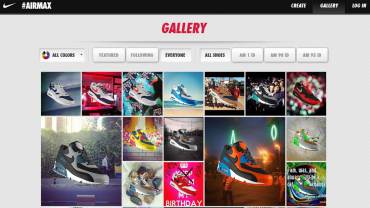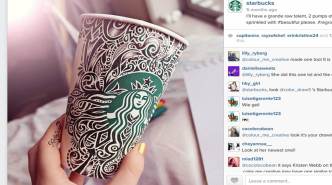1.Virtual escapism is perfect for a pandemic, yet VR is so far from being mainstream
It’s hard today to get a good quality VR headset. Popular V.R. systems like the Oculus Quest and PlayStation VR have been sold out for months online.
The social VR apps are still a cumbersome experience. While Oculus allows your social graph to connect, there would be very few of your friends who own VR headsets.
Even AltSpaceVR, a kind of town square where groups of people can gather to hold concerts, play games and talk to one another, didn’t fire well.
The best V.R. experiences today are the solitary ones that didn’t involve any social interaction at all. Like Nature Treks VR, a game that allows you to float around serene meadows and pristine beaches while a soothing soundscape plays. Or Real VR Fishing, an app that lets you scout for prize catches in a series of simulated lakes and rivers
Escapism is virtual reality’s strong suit, and it’s why major gaming studios are developing more big-budget games for platforms like Oculus and PlayStation VR
Part of the problem for virtual reality enthusiasts is that much of what a V.R. headset offers can be found in other substitutes which have been hits. Fortnite, for example, has become a venue for concerts and other large virtual gatherings. (A concert by the hip-hop artist Travis Scott last week drew more than 12 million viewers.) Animal Crossing, a whimsical Nintendo Switch game, has become a surprise quarantine hit. Millions of people are using Zoom and other video-chat apps to hold virtual game nights, cocktail parties and yoga classes on their laptops and phones, without the need for special hardware.
These substitute experiences aren’t fully immersive like VR is…..But the reality is that they need not be. Look at the breakout moment for AR in 2017 – It was a Snapchat filter that let you turn yourself into a dancing hot dog.
We are creatures of habit, and it may be that people simply prefer virtual experiences that don’t require them to strap an expensive computer to their forehead.
2.Animal Crossing is the game for the Coronavirus Moment
With the world in the grip of a pandemic, this was exactly the sort of escape that has captivated so many in the world of Animal Crossing: New Horizons. It’s the latest in a series that’s been around since 2001.
What is Animal Crossing about?
In Animal Crossing, players take on the role of a lone human on an island filled with pudgy anthropomorphic animals. Players are tasked with building a thriving society, filling it with shops, bridges and other accommodations for its residents. There are no high scores, vampire Nazis or final bosses. The game is played at a relaxed pace, in which the player can do as much or as little as they want on any given day.
The game changes day to day, with new fish, bugs and other surprises appearing only during certain seasons or months. Animal Crossing doesn’t have an end and can be played indefinitely
What contributes to its wide appeal?
For children, being able to engage in adultlike chores, like building and decorating a house, gives them power often out of reach. For adults, especially millennials who have lived through the Great Recession and current coronavirus-induced economic stress, it offers the white picket fence often associated with the American dream that’s increasingly elusive. Debt, which can accumulate quickly in Animal Crossing, can also be paid off easily. Goals feel attainable and within reach.
It’s found a dedicated audience with millennials, some of whom grew up with the franchise, and with younger audiences experiencing it for the first time. It’s all the more intensified for those struggling with isolation and addiction.
The slow pace bestows on the game a level of calmness, one that gives the player total control over progression.
3. Trend – High School Seniors are making yearbooks on Instagram
As high school seniors across the country mourn the loss of year-end rituals like dressing for prom and walking across the stage at graduation, at least one tradition is alive and well: yearbook signing, though not with a pen.
Hundreds of students have created yearbook accounts on Instagram to celebrate their classmates’ achievements and share memories and inside jokes. The pages are assembled from student submissions sent to the account administrators by direct message: portraits, post-graduation plans, quotes. Classmates comment on each post as a kind of signature.
Every high school in the US is starting to use a page like this to celebrate their senior class. It’s across the country.
4. The Virus has revealed our essential tech (and weeded out the excess)
The lockdown has proved that many of the high-tech innovations— from foldable smartphones to doorbell cameras — are excessive, even if they are kind of neat.
In a crisis, our most important tech — what we have turned to again and again — has boiled down to just a few basic items and services:
- Computing devices with access to work tools and a browser.
- Communication tools to stay connected with our loved ones and colleagues.
- Entertainment to keep us from losing our minds.
- An internet connection to let us do all of the above.
When you think about it, that’s all the tech we truly need even when there is no pandemic. That’s actually a nice revelation. It also means that we don’t have to spend much money to maximize our happiness with tech.
5.Apple iPad is the gadget of the pandemic
The tech we have turned to in this pandemic over and over boils down to a computing device, communication tools, entertainment and an internet connection. The iPad delivers on all of those needs even better than a smartphone.
With a bigger screen than an iPhone, the iPad excels at videoconferencing with apps like FaceTime and Zoom, and it’s great for watching movies and programs on Netflix and YouTube. When you attach it to a good keyboard, it becomes an excellent budget computer with a zippy internet connection for browsing the web, writing emails and composing documents. All for half the price of a regular iPhone.
(In markets like Asia, a high end Samsung Tablet could be the solution)
It’s really in that sweet spot of being relatively affordable and having everything most people will need




